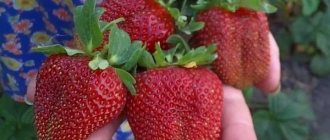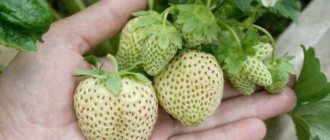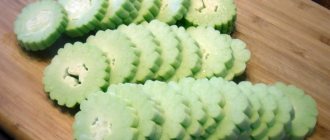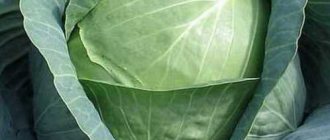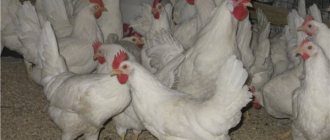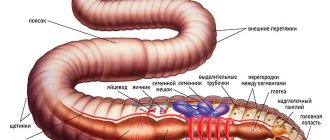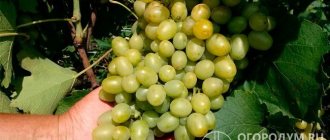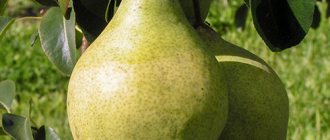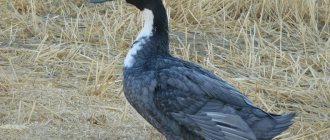Cucumber Shchedrik f1 is an early-ripening and very productive variety, which is clearly visible in the photos attached to its description in reference books for gardeners. The plant can be grown in open ground, under film, in a greenhouse.
According to reviews from summer residents, the hybrid adapts well to environmental conditions and can be grown in almost all regions of the Russian Federation with varying climatic conditions.
Characteristic
The variety was developed as a result of joint work between agronomic breeders and the Research Institute of Vegetable Crops Breeding LLC. Cultivated since 2005. The early ripening hybrid is suitable for cultivation in both small and large areas.
Parthenocarpic cucumbers with female inflorescences form fruit without pollination. The variety is characterized by bunch fruit formation. The plant can withstand heavy harvest load. Each node produces 3–4 ovaries, but up to 6 can develop. Sometimes there are up to 40 fruits on a bush at the same time.
The average length of a cucumber is about 10–12 cm, the diameter is 3–3.7 cm, and the weight reaches 90–100 g. The hybrid has a narrow seed chamber and practically does not contain seeds inside.
The greenery itself is tuberculate, white-thorned, and has a beautiful dark green color. The white stripes at the tip are practically invisible. The peel of the fruit is loose, the pulp is juicy, sweet, without bitterness or voids.
Characteristics of Shchedrik F1 cucumbers.
Cucumber Shchedrik f1 is described as a high-yielding hybrid, which is confirmed not only by its name, but also by reviews from gardeners. It is tasty, transportable and versatile in use: good fresh, canned, and exhibits wonderful taste when salted and pickled.
The opinion of summer residents regarding Shchedrik cucumbers
Thanks to the comments of experienced vegetable growers, you can find many useful tips and recommendations for growing cucumbers. The reviews contain the necessary information that will help the novice gardener not to make mistakes during planting and care.
- Valentina Mikhailovna. The seeds were recommended to her by a salesperson in a store. I was very pleased with the choice. The cucumbers produced a record harvest, about 100 pieces. from a plant. Excellent for canning. In fresh form there are no complaints either. Resistant to diseases. The variety has become a favorite.
- Svetlana. I’ve known him for a long time, saw a new variety of cucumbers, and decided to try it. I didn’t like the incomprehensible bitterness of the pickled cucumbers. And everything is great when fresh. I decided to try again, if it happens again, I won’t grow it again.
Proper care of any plant, including cucumbers, will certainly give positive results. “Shchedrik” pleases all those who are patient with a rich harvest.
Preparation of planting material
Cucumbers are grown both by seedlings and by direct sowing in the ground.
Cultivation by direct seeding
This method is best used in the southern regions of the country. When growing cucumbers by direct sowing of seeds, planting material should be prepared.
Selection of viable seeds
It is better to purchase cucumber Shchedrik f1 (description, reviews will help you choose the right seed seller) from a trusted manufacturer to be sure of the quality of the seed (for example, from Agro, Aelita).
If in doubt, the seeds should be checked. To do this, prepare a saline solution (1 tablespoon of salt per liter of water), where the seeds are placed for 15 minutes. Those that have sunk to the bottom are suitable for sowing; non-viable seeds will remain on the surface.
Disinfection
To do this, the selected material should be placed for 20 minutes. in a 1–2% solution of potassium permanganate, then rinse thoroughly and dry.
Hardening
This procedure helps plants better adapt to open ground conditions in areas with unfavorable climatic conditions. However, modern parthenocarpic hybrids (for example, Shchedrik F1) are perfectly adapted to unfavorable conditions already at the genetic level and do not require hardening.
Sowing
Plant the seeds in the ground to a depth of 2–3 cm and carefully water them. You can stretch a film over the top or sprinkle it with a thin layer of earth so that the wet soil does not “crust” when it dries.
Sprouts usually appear within 1–2 weeks. Weak plants should be removed (in order not to damage the root system of a neighboring plant, it is better to pinch a weak sprout rather than pull it out).
Seedling growing method
The seedling method is common in regions with cold summers. Seedlings can be grown in plastic, but it is better in peat cups 10–12 cm wide.
The substrate can be purchased in specialized stores or prepared independently:
- 1 tsp turf soil;
- 1 tsp sand;
- 1 tsp peat;
- 2 hours of humus;
- add ash or fertilizer.
The seeds are planted in the prepared substrate to a depth of 2 cm and watered. To create a microclimate, cover with film. Optimal temperature conditions for germination are +25 °C. After the sprouts appear, the temperature is reduced to +20 °C to prevent the plants from becoming too elongated.
When 2 leaves appear, the seedlings are placed in a well-lit place (for example, on a windowsill). The length of daylight hours must be at least 15 hours. If there is a lack of daylight, supplement the lighting with fluorescent lamps.
During this period, the bushes should be fed. To do this, they are watered with a solution: 45 g of nitrophoska are diluted in 3 liters of water.
After 20–30 days, the plants are ready for planting. By this time, 3–4 leaves should have already formed. It is not worth keeping them longer, as the bushes will outgrow and take root poorly.
A peat cup with seedlings is placed in the hole to a depth of 6 cm (the plastic container must be removed), covered with earth to the bottom sheet, watered with warm water and covered with film for several days. It is recommended to leave the distance between plants up to 50 cm, the row spacing should be approximately the same.
In order for the plant to take root well, when the first ovary appears, it is removed at the 4 lower nodes. This allows the transplanted cucumber bush to develop a strong root system.
Growing rules
“Shchedrik” is grown mainly by seedlings with subsequent planting for permanent residence. When growing, special attention should be paid to pre-sowing seed treatment and temperature conditions for keeping seedlings.
Despite the high germination rate of hybrid seeds by default, pre-sowing treatment should not be neglected - it is the key to health and high yield. Pre-sowing preparation includes the following activities:
- Disinfection of seeds in a solution of potassium permanganate or hydrogen peroxide;
- Soaking in growth stimulants such as Epin or Kornevin;
- Bubbling in purified water for 24 hours before sowing.
Shchedrik seedlings have a tendency to “stretch”. To avoid this phenomenon, the correct temperature regime should be maintained:
- Before emergence – 26-30*C;
- Within a week after emergence – 16-18*C;
- The rest of the time before landing for permanent residence is 22-24*C.
“Shchedrik” is not a whimsical hybrid. The agricultural technology for its cultivation is standard:
- Moderate watering once every 2-4 days (depending on the weather);
- Organization of a three-level trellis;
- Periodic stepsoning;
- Fertilizing with alternating organic and mineral fertilizers every 2 weeks.
Growing seedlings
Hybrid seeds are not treated before sowing, since the material in packages is sold already disinfected.
To grow healthy and strong seedlings, use soil enriched with organic matter and minerals. For self-preparation, you will need 1 part sawdust and 2 parts each of humus and peat. For disinfection, the substrate is treated with a dark solution of potassium permanganate or “Fitosporin”. The mixture is prepared in a large bucket and 30 g of ash and 25 g of nitrophoska or superphosphate are added.
Seeds are sown immediately in individual cups made of plastic or peat. The containers are filled with a damp substrate, one grain is placed in holes 2 cm deep and watered generously with water at room temperature.
After two leaves appear, the seedlings are taken out to a sunny windowsill and fed with a solution: 45 g of nitrophoska per 3 liters of water. The hybrid is demanding on lighting, so if there is a lack of sunlight, seedlings are helped with fluorescent lamps. The duration of daylight should be at least 15 hours.
Preparing the soil and planting site
To grow this variety, it is necessary to select a well-lit area with fertile soil. Areas where onions, potatoes, beets, cauliflower, and tomatoes were grown in previous seasons are suitable for planting.
The selected plot of land should be properly prepared:
- In autumn, the area is cleared of tops and weeds and dug up.
- Make holes or trenches up to 40 cm deep in the garden bed.
- The bottom is covered with dry tops or hay, a layer of manure is laid on top, and everything is covered with earth.
Some summer residents carry out such preparation in the spring. In this case, the manure should be rotted or semi-rotted (1-2 years old). It should be applied at least 3-4 weeks before planting.
Approximate landing times
Cucumber Shchedrik f1 (description, reviews from gardeners recommend paying attention to this) should be planted at a time appropriate for this variety. To correctly determine the time of planting, you should focus on warming up the soil: by this period the soil should warm up to 15–16 °C.
Approximate dates for central Russia:
- seedling method in a greenhouse - early April;
- seedling method in open ground - second half of April;
- seeds in protected ground - mid-May;
- seeds in open ground - end of May.
Description of the hybrid Cedric F1
This cucumber is not yet as widely known as its Dutch “brothers”, but positive reviews have been received from those summer residents who have tried to grow it. Breeders note that it is advisable to plant the plant in greenhouses using the trellis method. In this case, the variety’s yield is higher and its potential is fully realized.
Note! On open ground ridges, cucumbers are often grown spread out, without a garter. More frequent planting is allowed.
The plants are powerful, the growth of the main shoot is not limited by the flower raceme. Belongs to the indeterminate group, branching is average, lateral branches are quickly formed. The type of pollination is parthenocarpic, which greatly simplifies care. It is not necessary to attract bees for pollination, therefore, in temperate climate zones, planting in greenhouses is possible.
It produces predominantly female flowers and has a powerful root system. The leaf blades are bright green, slightly wavy, convex, medium in size. Formation of cucumbers in the axils of 2-4 pieces, a tendency towards a bouquet type is noted.
The fruits are cylindrical, the tubercles are of medium and small height. The skin is evenly colored, the color is emerald green with very small, weakly defined whitish stripes. The pubescence is white, very dense. Cedric is a classic Dutch cucumber with the corresponding type of “shirt”. The spines are located on the tubercles themselves and between them, forming a fairly dense coating.
The main purpose of the fruit is preservation and marinades, but fresh cucumbers are also tasty. The weight of cucumbers does not exceed 110 g, on average - 80-90 g, length - 12-14 cm. The taste characteristics are excellent, the pulp is without voids and bitterness, sweetish, with a pleasant cucumber aroma of freshness. Cucumbers are storable and suitable for transportation. Subject to proper temperature and storage conditions, they can be stored for up to 8-12 days.
Care
Cucumber Shchedrik f1 (description, reviews confirm this) is an early ripening variety. The beginning of fruiting should be expected 45–47 days after emergence. With proper care and favorable climatic conditions, the harvest period can last from early July to mid-September. Productivity depends on correct and timely watering and fertilizing.
Important. Shchedrik F1 can shed green mass and wither due to drafts. Therefore, it is recommended to plant plants in places where there is no wind or to protect cucumber beds with curtain plants (for example, by planting corn, which is best planted 7–10 days earlier than cucumbers).
To get the desired harvest, you should provide the plants with proper care, including:
- watering;
- feeding;
- weed control and loosening;
- hilling and mulching the soil;
- disease prevention.
Watering
It is recommended not to use cold water for irrigation. Watering should be done 2-3 times a week in the morning or evening when the heat subsides. It is better to use a watering can or hose with a sprayer, as a strong stream washes away the soil, resulting in exposed roots. If the root system is on the surface of the earth, then the plant must be hilled up.
At high temperatures (above +25 ˚С), it is necessary to sprinkle every morning or evening (that is, irrigation when water is sprayed over the entire surface of the plant, as during rain). This will help cool the bushes a little.
If cucumbers are grown in a greenhouse, then on hot days the temperature should be regulated by ventilation. During fruiting, plants require more water.
Weed control, loosening
Weeding and loosening are carried out only after the sprouts appear. Further, they are recommended to be carried out once every 10 days. Weeding does not allow weeds to choke out cultivated plants and consume the soil's nutritional resource.
Loosening provides free access to the roots of air and dry fertilizers, such as wood ash. The soil between the rows also needs to be loosened and weeded regularly.
Mulching
Mulching allows you to reduce the number of weedings and retain moisture in the ground for a longer period.
The following can be used as mulch material:
- mowed lawn grass (it is not advisable to use weed grass, since its seeds can ripen even on a mown plant, which will further clog the soil with weeds);
- hay;
- peat;
- sawdust;
- black agrofibre.
Garter
Shchedrik is best grown on a trellis. It is optimal to stretch a mesh with a cell of 15 by 15 cm. At the initial stage of growth, the plant must be helped to “grab” the support, and then it will cling to the mesh with its mustache.
The garter should begin when the plant reaches the first horizontal support. This must be done in such a way that the vine is not overtightened, and the top of the plant has the opportunity to freely weave upward.
Bush formation
The formation of a cucumber bush begins after the appearance of 8–9 leaves. This is approximately 7–8 days after planting the seedlings.
Formation is necessary for a number of reasons:
- poor ventilation of the planting can lead to the development of various diseases;
- insufficient access to sunlight disrupts photosynthesis processes;
- The more energy the bush spends on developing shoots, the fewer ovaries are formed.
The bush should be formed carefully. Inaccurate rotation of the lash can lead to slower growth of the cucumber plant.
Forming a bush “in one trunk”
Cucumber Shchedrik f1 is a bouquet-type hybrid, that is, 4–6 greens can be formed in one node. Without a strong root system, the plant cannot provide all ovaries with equal nutrition. Forming a bush “in one trunk” solves this problem, especially since in parthenocarpic hybrids the female flowers are formed on the central stem.
Formation takes place in several stages:
- The lower leaves that are in close proximity to the ground should be removed.
- The 3rd and 4th leaves are blinded (everything is removed from their axils: flowers, stepsons, ovaries).
- To prevent the plant from losing productivity, the load should be reduced. To do this, all side shoots are removed. You can leave 2-3 side shoots at the very top of the trunk, but it is recommended to pinch them off above the second leaf.
- If the main trunk grows weakly, then it is pinched when it reaches 150 cm in length. In case of intensive growth, the whip is thrown over the trellis and pinched at a distance of 60 cm from the top wire.
Important. You cannot break off shoots; they should be removed with a clean and sharp knife (scissors).
Top dressing
Shchedrik is a very productive hybrid. But the number of fruits collected largely depends on watering and fertilizing. Plants should be fed 3-4 times per season. Both organic and inorganic fertilizers are used.
First feeding
It is carried out 14–15 days after planting:
- An aqueous solution of ammophoska is suitable (1 tbsp of this fertilizer is diluted per 10 liters of water);
- You can make up a mineral complex fertilizer yourself: dilute 10 g of superphosphate, urea, potassium salt in 10 liters of water;
- a solution of fresh bird droppings (1/2 liter of organic matter per 10 liters of water).
You can also use wood ash as a top dressing. It should be scattered on moist soil.
Second feeding
It is produced during flowering.
As one option, you can use the following mineral composition:
- superphosphate – 40 g;
- ammonium nitrate – 30 g;
- potassium nitrate – 20 g.
This volume of fertilizer is diluted in 10 liters of water. Organic feeding: horse manure and water (1:8).
Third feeding
During the fruiting period, use a solution of urea (50 g) and potassium nitrate (25 g) in 10 liters of water.
Fourth feeding
It is optional. It is carried out to extend the fruiting period. In this case, you can use an infusion of rotted hay, a solution of wood ash (a glass of ash per 10 liters of water). It can be applied every ten days until the end of fruiting.
Reviews
Feedback from farmers about growing the Shchedrik hybrid is mostly positive.
Larisa, Kursk : “I grow hybrid cucumbers only in a greenhouse. Among them is Shchedrik from Gavrish. I switched to the products of this company a long time ago and am satisfied. Cucumbers are absolutely undemanding to care for. With little labor input, they allow you to get a rich harvest. They bear fruit continuously until the end of September.”
Igor, Podolsk : “I have been planting cucumbers for several years in a row, seed germination reaches 100%. I grow it from seedlings in a greenhouse. I do not treat the seeds with anything. I tie the bushes to a trellis, but do not shape them. Caring for the plant is easy. I water deeply once a week. In the summer I ventilate the greenhouse.”
Varvara, Gukovo : “I grow the Shchedrik hybrid, along with other varieties of cucumbers, in the garden using direct sowing in the ground in early June. I cover the top with agrofibre overnight. The shoots are friendly, the fruiting is abundant. Greens are not prone to overgrowing. The pulp is dense, juicy, without bitterness.”
Possible diseases and pests, ways to get rid of them
Shchedrik is resistant to many diseases that affect cucumber plants. But 2 times per season, as a preventative measure, it should be treated with fungicides (for example, “Quadris”, “Kuproksat”).
It is possible to carry out disease prevention every 5–10 days with Fitosporin from the seedling period. This is a good and inexpensive biological product that has an excellent effect. Treatment with it is possible even during the fruiting period (cucumbers are suitable for consumption within 4–5 days after treatment).
To prevent and combat diseases, you can use "Gamair" - a biological agent with a strong fungicidal and antibacterial effect (or "Topaz").
Downy mildew
Shchedrik F1 should be protected from peronosporosis.
Signs of downy mildew
The disease can be identified by the following signs:
- the appearance of small brown or yellow spots on the leaves;
- the formation of a gray-violet coating on the back of the sheet;
- then the leaves become yellow-brown and dry out.
Causes
The disease develops under certain conditions:
- low air temperatures (below +9 °C) and high humidity;
- excessive watering with cold water;
- soil is too alkaline.
Prevention
To prevent cucumbers from suffering from powdery mildew, you should:
- remove and burn already diseased bushes in a timely manner;
- carry out loosening and weeding;
- treat the soil (especially in greenhouses) with “Gamair”, “Fitosporin”, a solution of potassium permanganate, copper sulfate;
- observe crop rotation.
Treatment
If the plants are already sick, then at an early stage they can be treated with drugs such as Ridomil, Oksikhom, Bordeaux mixture (5% solution) or one of the folk remedies.
Traditional recipes for peronosporosis
Many gardeners use folk remedies to combat the disease:
- Once a week, irrigate the plants with the following composition: 9 liters of water, 1 liter of milk (low-fat), 10 drops of iodine.
- 400 g of wood ash is poured into 3/4 liters of boiling water and left for 3-4 hours. Then filter and add water to make 10 liters of solution. Spray cucumbers once every 7 days.
- 2 times a month you can treat plants with a solution of potassium permanganate (1 g per 10 liters of water).
Pests
To combat insect pests, the following are usually used:
- "Aktofit";
- "Aktara";
- "Thunder";
- "Commander";
- "Nemabactin";
- "Fitoverm".
In addition to insects, plants can be damaged by slugs. Ground hot pepper scattered on the beds, tobacco dust, rosemary, and spraying with ammonia (4 tablespoons of ammonia per 10 liters of water) help get rid of them.
Many gardeners use tin can traps with a small amount of beer.
Peculiarities
Cucumbers of the Shchedrik f1 variety have both positive and negative characteristics. At the same time, the variety has more positive qualities than negative ones.
| pros | Minuses |
| You can't get the seeds yourself |
Cucumber Shchedrik f1 (description, reviews from summer residents define this property of the hybrid as negative) is not capable of producing seed for its further propagation. The absence of seeds is also a definite disadvantage for the health of the body.
Cucumber seeds are a source of valuable substances for the male reproductive system, which are also important for women's health. They are a supplier of organic zinc, necessary for the absorption of vitamin A.
Self-fertile varieties (in this case Shchedrik f1 cucumbers) are superior to bee-pollinated ones in some characteristics. However, in reviews they are sometimes described as varieties that are still somewhat inferior to the second in terms of nutritional and dietary value, taste, aroma, and crunchiness.
Author: Irina Zhuravka
which cucumbers are the most productive?
What are you doing here, huh?
In an apartment and in general in urban environments, it is very easy to grow luxurious cucumbers. The main thing is to know how to choose the right varieties. There are a lot of them, but not all are available for purchase. I wasn't able to buy everything from the list. I’ll only tell you about the varieties that we grew and know about the yield.
Valentina Timofeeva
A super popular hybrid in Russia for processing (especially pickling) and fresh consumption. The fruits are large tuberculate.). . for pickling and Varieties German, Masha, Zozulya. ) Market Favorite Masha and also produced by the company Aelita, buy seeds only from well-known Companies Sadek Aelita Gavrish...
DENVER
Ibn Sina and Fuji. In our Auchan store they were quickly snapped up. Parthenocarpic hybrids can grow in greenhouses. I plant the ones I like in the pictures. Well, of course, so that there are gherkins for pickling. That year I planted Parisian gherkins, very strong cucumbers, and bison is also good. The variety is intended for growing in open ground in the middle zone. If you plant it in the northern regions, it will affect
Marina Ivanova
It should also be said about the differences between varieties intended for greenhouses and open ground. As a rule, the difference between them is expressed in their fastidiousness to environmental conditions. Ground varieties do not differ in high yield compared to greenhouse varieties. But they are easier to care for - they are more unpretentious to the conditions of the outside world. Cucumbers for a greenhouse are usually the most productive, and they can bear fruit in late autumn and early spring, but in terms of taste, varieties intended for a greenhouse are often inferior to those grown in open ground.
Irina Murzinova
This hybrid belongs to the group of cucumbers intended for cultivation in open ground and film tunnels without tying to a trellis and without forming a plant. The peculiarity of such cucumbers is their suitability for barrel salting (by the way, considered the most delicious). This group has minimal maintenance requirements and is highly resistant to adverse weather conditions. The hybrid is mid-early, begins to bear fruit on the 38-46th day after mass germination, is distinguished by a friendly early harvest (more than 30%), and bears fruit until frost. It has a very thick skin, crispy texture and strong aroma, which makes it ideal for pickling. The stem is creeping, medium length, highly branched. The fruit is beautifully cylindrical, short, 8-10 cm long, 2.5-2.8 cm in diameter, large-tubercular, sparse tubercles, black-spiked, dark green in color with marbling, blurred white stripes reaching 1/3 of the fruit. The taste is high (especially when salted), there is no bitterness. I liked both the taste and appearance.
Elena Ivanova
"NK-mini" - very cute cucumbers, reminiscent of greenhouse ones. They themselves are not large and reach about ten centimeters. The yield is excellent - no less than forty pieces per bush.
Lenka Nakhalenok
Yours germinate better after a year, but try so many varieties. There is a picture on the bag and a description of what it is for. I buy different ones every year.
Valentina Barzakovskaya
It is best to plant self-pollinating cucumbers, and the seeds from them are unlikely to be the same; they are mostly hybrids, and therefore it is better not to save on seeds, but to buy them in a store. And the variety, again, whether you prefer large-fruited or small-fruited. But I think it’s better to plant both such and such, then you will always have a harvest. Large-fruited ones are Zozulya F1, Libelle F1.
Tatyana B
Cupid, Zozulya, Competitor, Brigadny, and my Parisian gherkin grew 15 cm in size and 7 cm in diameter, it was a real bourgeois, I don’t sow this variety anymore
panina
It should also be mentioned that when choosing the most productive variety of cucumbers, you need to pay attention to the number of female flowers it has. Thus, parthenocarpic varieties and hybrids with the female type of flowering bring the highest yield.


